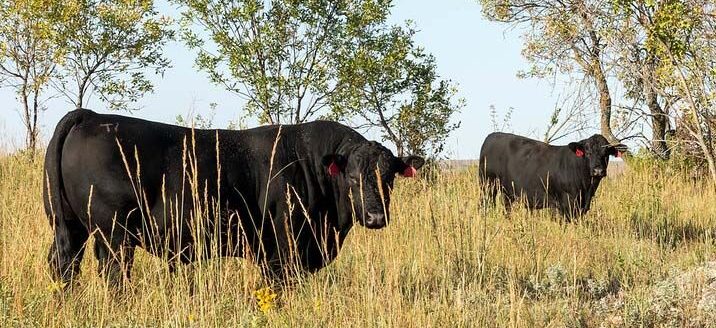Tis the season for a lot of bull
You can always tell when the first of the year rolls around in the cattle business. This is the time of year when your mailbox fills with bull sale flyers, catalogs, and every newspaper or cattle twice as heavy from advertisements. These ads feature calving ease bulls, bulls to improve your weaning weights, bulls with superior carcass traits, maternal bulls, and the list goes on. We also can expect to see indices with Expected Progeny Differences for every trait you can imagine. Buyers should be able to get a bull purchased, but there are some things every bull buyer should think about to help make that purchase more successful.
Catalogs are full of information and as a buyer, you make yourself aware of what the information means prior to the sale. The data type and amount collected has changed drastically in the past ten years. Today, with the ability to perform genomics testing and combining that with individual animal performance, breed associations are able to increase the accuracy of indices and EPDs in young bulls with no calves on the ground. Most breed associations have information available on their breed average EPDs and indices. Additionally, most associations and some breeders have developed maternal, terminal, and combination indices that can help you sort through the data more efficiently. Remember that the available data are just tools helping you select new sires to make your desired herd improvements.
Today, with the emphasis on growth and its influence on EPDs, bulls are pushed harder as yearlings with higher concentrate rations. Moreover, a majority are tested in lots where mud and soft ground are abundant. Unintentionally, this can lead to feet problems that may not be revealed until you are in breeding season. Pay attention to toes and feet when purchasing bulls, make sure they are the correct length and toes are uniform and equal on each foot. Visit with producers and ask questions about the way bulls were developed, if any foot trimming was done, and if so, which ones received trimming. This is in no way a deal breaker, but may help you decide how to manage bulls after purchase. If possible, take newly purchased bulls home and turn them out to pasture, or into larger lots. Doing so will help their mobility and allow possible softened hooves to “harden up” prior to breeding season.
Two other items that should have some attention given to them include scrotal circumference and the bull’s sheath. The sheath should have the correct angle and tight to the body. This will help ensure that there are fewer injuries during the breeding season. Likewise, scrotal measurement is important to a bull’s fertility and has been linked to earlier advent of puberty in a bull’s offspring. The Beef Improvement Federation states that a yearling bull should have a minimum of 30 centimeter scrotal circumference to pass a breeding soundness exam. They further recommend the same yearling bull have 34 centimeter scrotal to be used as a maternal sire from whom replacements will be kept. Likewise, a two-year- old bull should have 34 centimeter scrotal to pass a breeding soundness exam. Buyers should remember that a yearling will not be able to breed as many cows as an older bull during the first breeding season, nor will he maintain his body condition as easily. Thus, younger bulls may need to be pulled from breeding pastures earlier to ensure that they have time to improve their body condition score prior to the second breeding season.
Most importantly, bull buyers should have goals and criteria when buying bulls. It is important that buyers understand their herds and have a direction in mind prior to going to any sale. As cattle producers we should have herd goals and know what we would like to improve in our herds and what we are not willing to sacrifice to make improvement. For example, you may want to increase weaning weights, but it cannot come at the expense of calving ease and mature cow size. Finally, don’t fall into the trap of “I am at the sale, I better buy a bull.” Purchase your herd sires with intention, do your homework, and don’t forget your goals. Make sure to check out your local breeders as well, because chances are their cattle preform in the same type of environment that yours do.

